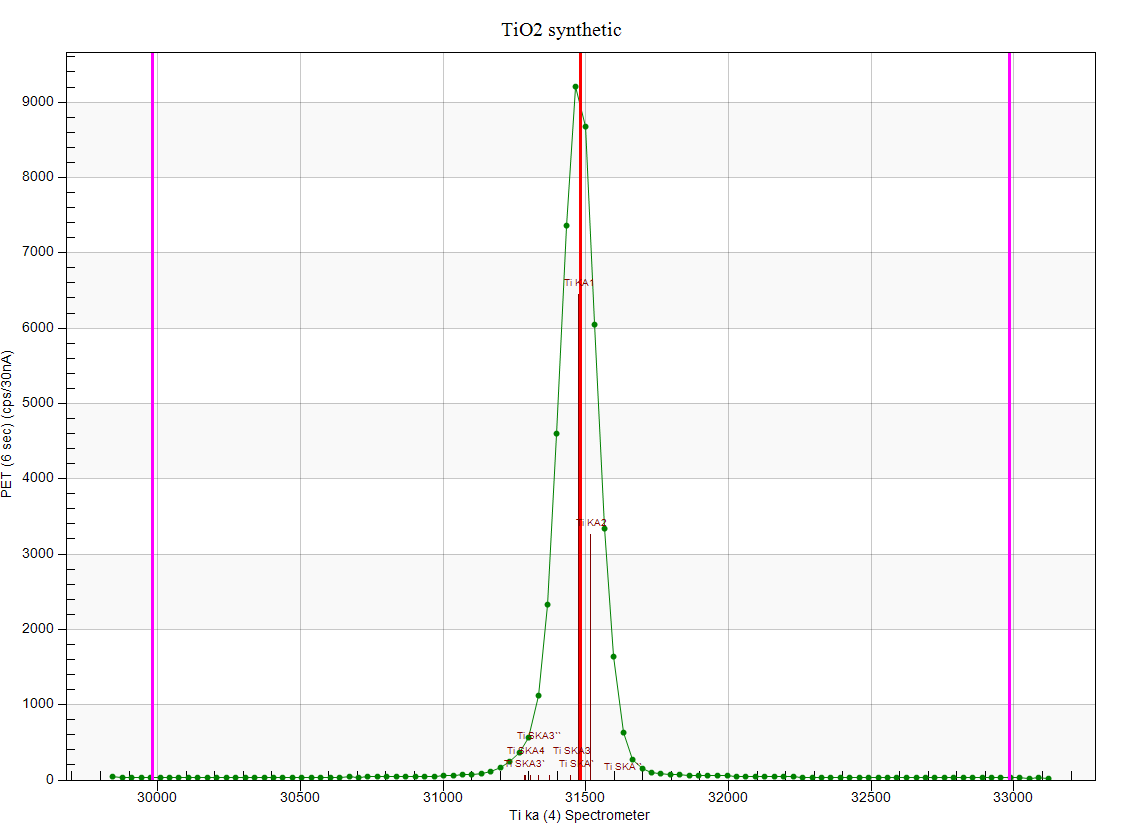If there's a prize for worst Bragg crystal, I think our lab just won!
I don't normally use the PET crystal on our spectrometer 1 as it's a 4 crystal (PC1, PC2, TAP and PET), and usually we're just using the TAP or PC1 crystals. But today we are analyzing Ti on all 5 spectrometers, and using MAN background for best sensitivity (I'll post the statistics on the SiO2 blank when it done), so we had to have PET on all 5 spectrometers.
Anyway, this morning I was tuning things up and noticed that the peak shape on spectrometer 1 was just not looking right as seen here:

The count rate was also 10 times less than what the other PET crystals were reporting. So I ran a wavescan on TiO2 and, just for reference, this is on spectrometer 4 (also PET), and is what one expects from ones EPMA:

But for spectrometer 1, this is what we got:

I know, we all just threw up a little.

Looking back at some previous student runs, it appears that this change in peak shape occurred in some time in 2016, but I didn't see it until now. I guess that is what happens when I'm only in the lab a few days a week...
We were planning on replacing the beam current regulator on Wednesday, so while we have the instrument vented, we're going to pop the cover off of spectrometer 1 and take a look at the crystal. It's got to be the crystal because I also ran a scan on Mg on TAP on spectrometers 1 and 2, and they both look fine.
Jeez... well it's always something, isn't it?
john